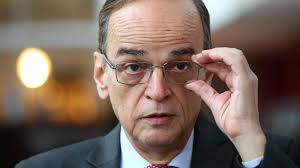In the complex context of the Syrian conflict and the evolving dynamics of international policy, questions continue about the United States’ stance, especially regarding President Donald Trump’s administration, which won the presidential election on November 5. Previously, Trump had ordered a withdrawal of US forces from Syria in 2019, only to reverse this decision under pressure from his advisers.
In a special interview with 963+, Hadi al-Bahra, head of the National Coalition for Syrian Revolutionary and Opposition Forces, discusses the likelihood of shifts in US policy and the potential impacts on Syria. He also sheds light on challenges in areas outside Syrian government control, spanning the north, west, and east of the country, in light of recent regional and international shifts.
No Change in US Policy
Bahra anticipates no immediate change in US policies toward Syria in the political, diplomatic, economic, or legal arenas. Instead, he expects a firmer implementation of existing policies, particularly those aimed at curtailing Iranian influence in the region. This hardline approach, he suggests, might open doors to new possibilities—either stimulating the political process on Syria or positioning the Syrian government to negotiate its ties with Iran, which could bring both confrontation and dependency.
Regarding the US military presence in Syria, Bahra stated: “There will be no withdrawal of US forces from northeastern Syria without prior political agreements between the United States and Turkey, or between the United States and Russia. The administration of President-elect Trump will continue to reject normalization with the Syrian regime, maintain sanctions, and refuse reconstruction efforts until irreversible progress is made in the political process based on UN Security Council Resolution 2254 on Syria.”
Trump Faces Multiple Crises
Bahra notes that Trump’s incoming administration faces a challenging global landscape shaped by multiple crises deepened by the policies of President Joe Biden’s tenure. He asserts that these policies weakened US standing, leading to new alignments and alliances across interconnected international and regional issues. According to Bahra, resolving these crises will require coordinated efforts with primary actors in each conflict, as no “quick fix” can address the overlapping global challenges
Bahra also notes that while Syria may not be a top priority for Trump, it remains closely linked to other international and regional issues that are likely to take precedence. He explains that Trump’s administration will prioritize resolving the Gaza situation, which requires addressing Iran’s regional influence. To contain Iranian influence, he argues, the administration will also need to engage with Lebanon, Syria, Yemen, and Iraq. The first stage in Gaza, as announced, involves a ceasefire, the disarmament of Hamas, and a detainee exchange.
Complex Files, Deals, and Compromises
Bahra emphasizes that meaningful progress will require cooperation from Russia, China, and Europe. “It is also unlikely without achieving Russian-American agreements regarding the war in Ukraine,” he adds.
Concluding his interview with 963+, Bahra cautioned against underestimating potential changes or military developments during the “lame-duck” period before Trump assumes office on January 20. Shifts on the ground during this period, he suggested, could complicate the political landscape when the new administration begins negotiations and settlements. “The intentions of countries are one thing; the realities they must navigate are quite another,” he stated.
This article was translated and edited by The Syrian Observer. The Syrian Observer has not verified the content of this story. Responsibility for the information and views set out in this article lies entirely with the author.


